.

- Yellow-crested cockatoo inserted in empty water bottles for illegal trade, found by police officials at Port of Tanjung Perak in Surabaya, Indonesia: photo by Jefta Images/Barcroft Media via The Guardian, 6 May 2015
- Indonesian police have arrested a suspected wildlife smuggler after discovering nearly two dozen rare live birds, mostly yellow-crested cockatoos, jammed inside plastic water bottles in his luggage.The 37-year-old man was stopped by police on Monday as he alighted from a passenger ship in Surabaya, a city on the main island of Java.Photographs show the birds, with distinctive yellow plumage, peering out of the bottles after being found by officers. The bottoms of the bottles had been cut off to squeeze the birds inside.

Yellow-crested cockatoo, Cacatua sulphurea, is on the IUCN list of critically endangered species: photo by Age fotostock/Alamy via The Guardian, 6 May 20155- The head of the criminal investigation unit at Tanjung Perak port, Aldy Sulaiman, said police found the birds stashed inside the man’s luggage.“We found 21 yellow-crested cockatoos and one green parrot,” he said.“All the birds were found inside water bottles, which were packed in a crate.”
- This yellow-crested cockatoo is one of 24 birds that were inserted in empty water bottles by smugglers in Indonesia. The consignment was spotted by police at Tanjung Perak in Surabaya, Indonesia: photo by Jefta Images/Barcroft via the Telegraph, 5 May 2015
- The birds have since been sent to Indonesia’s natural resources conservation office, which deals with wildlife-trafficking cases.Sulaiman said the man -- whose identity was not disclosed in line with normal criminal procedure in Indonesia -- had admitted carrying two birds for a friend but claimed to know nothing about the other animals.If found guilty of smuggling, the man, from near Surabaya, could face up to five years in prison.Yellow-crested cockatoos are native to Indonesia and neighbouring East Timor and considered critically endangered, according to the International Union for the Conservation of Nature.They are different to the larger and more common sulphur-crested cockatoo which is mostly found in Australia and New Guinea.Flying: Yellow-crested cockatoo (Cacatua sulphurea), seen in a park in Hong Kong: photo by Charles Lam, 9 March 2015

Untitled (Cockatoo with Watch Faces): Joseph Cornell (1903-1972), c. 1949, box construction with inoperable music box, 16 1/4 x 17 x 4 7/16 in. (41.3 x 43.2 x 11.3 cm) (The Lindy and Edwin Bergman Collection, Chicago; image by Michael Tropea)A yellow-crested cockatoo in a cageA yellow-crested cockatoo in a boxA yellow-crested cockatoo in a plastic water bottleWhen there are no more boxesNo more cagesAnd no more plastic water bottlesWhere will the yellow-crested cockatoo be
Will it be anywhere at allIn this worldWhen there is no forest
When there is no memoryNot digitalAnd nowhere real left to be
Will the yellow-crested cockatoo be anywhere at all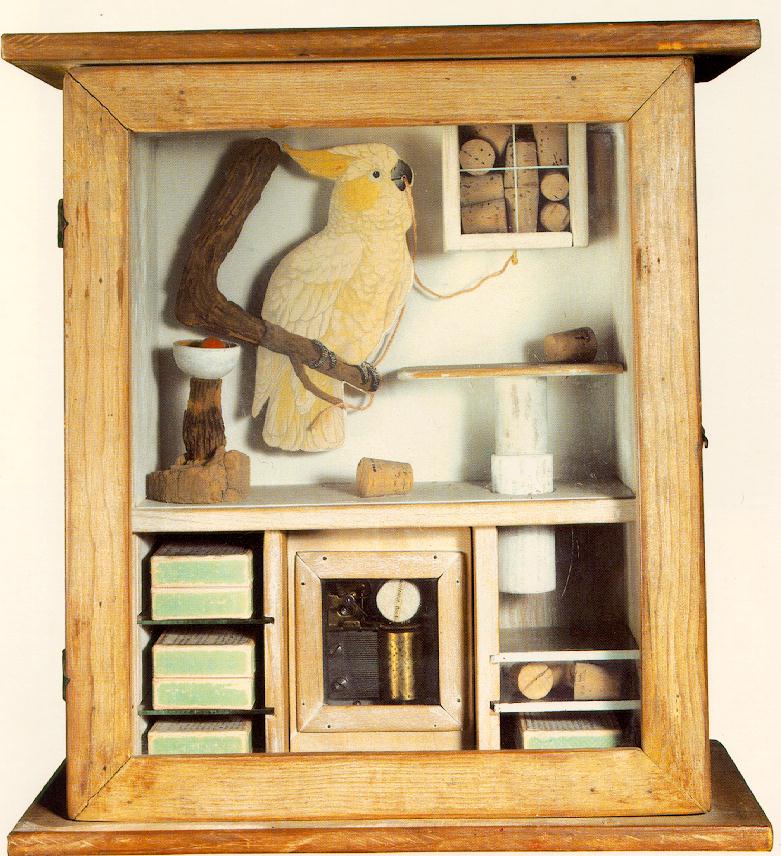
Untitled (Cockatoo and corks): Joseph Cornell (1903-1972), c. 1948, box construction, 14 3/8 x 13 1/2 x 5 5/8 in (private collection)
Desk of Death. The desk of an amateur taxidermist: photo by Tup Wanders, 3 February 2006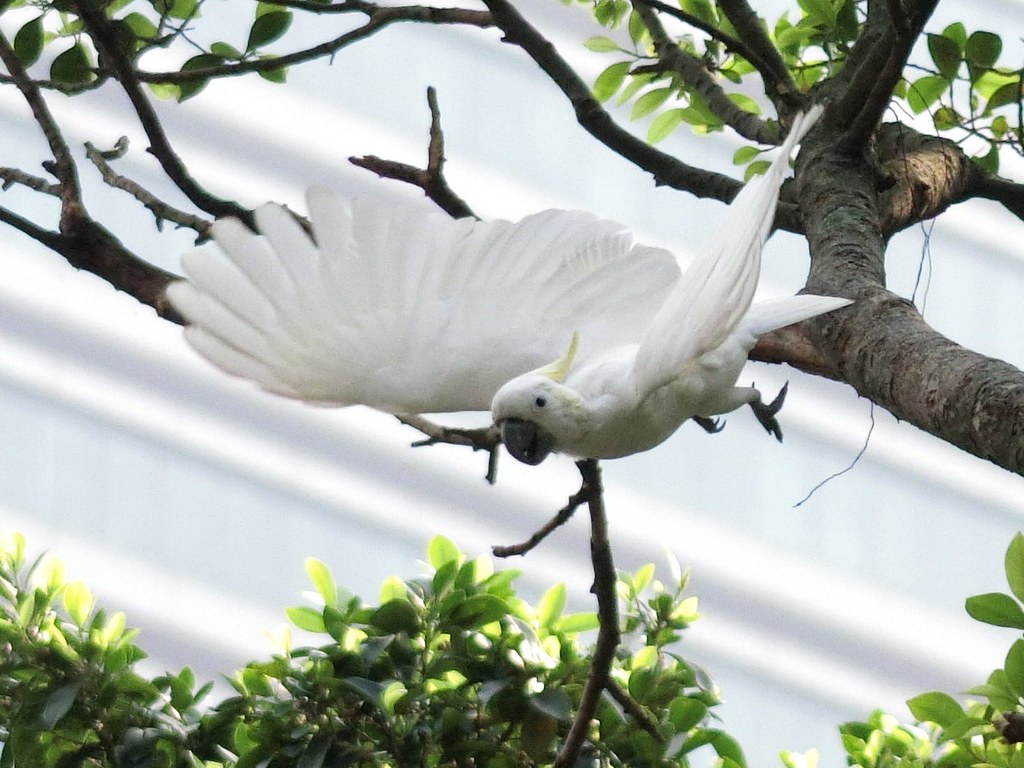
Flying: Yellow-crested cockatoo (Cacatua suiphurea), seen in a park in Hong Kong: photo by Charles Lam, 9 March 2015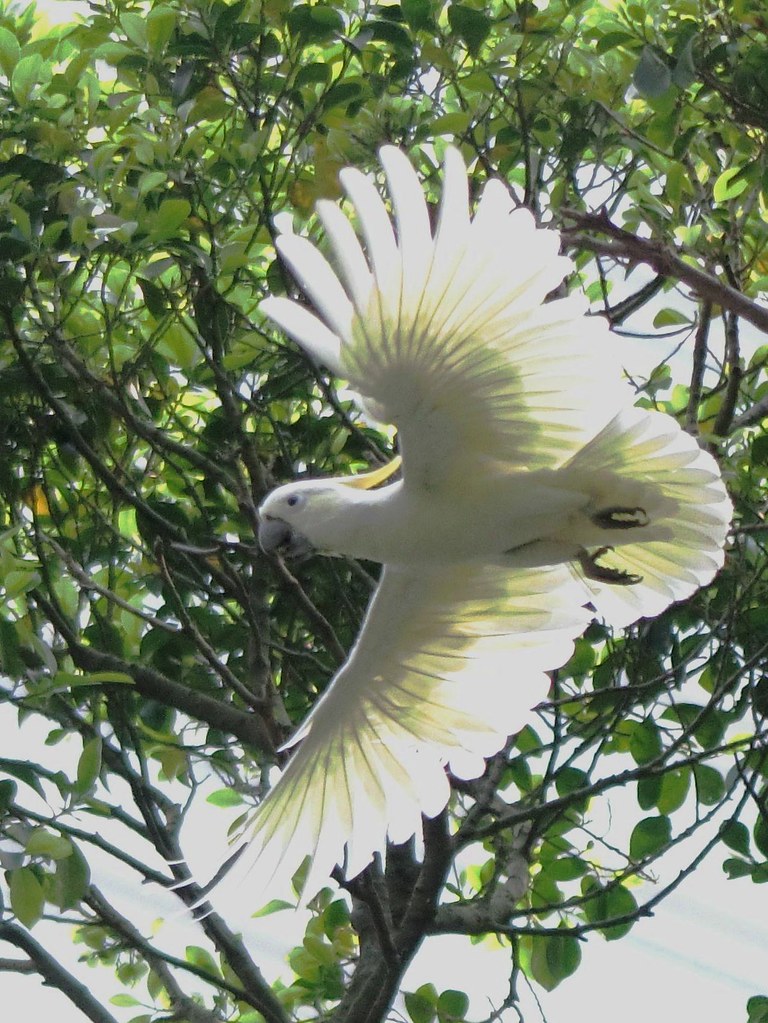
Flying: Yellow-crested cockatoo (Cacatua suiphurea), seen in a park in Hong Kong: photo by Charles Lam, 9 March 2015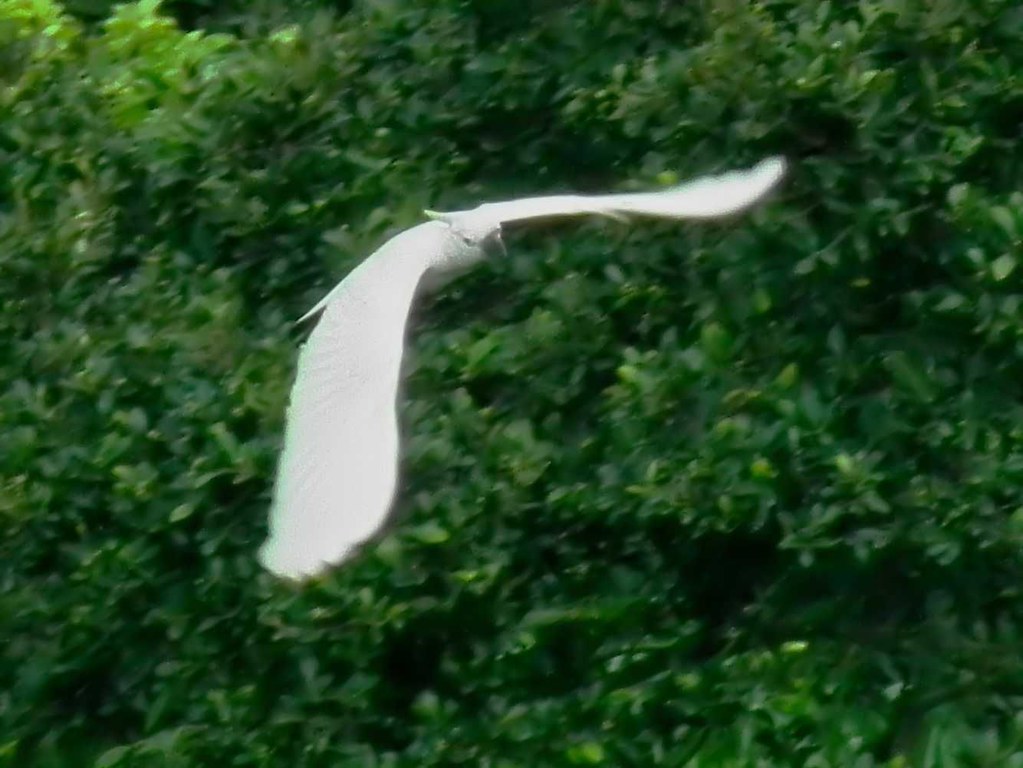
Flying: Yellow-crested cockatoo (Cacatua suiphurea), seen in a park in Hong Kong: photo by Charles Lam, 18 May 2015Yellow-crested Cockatoo Cacatua sulphurea
Current IUCN Red List category: Critically Endangered;
This cockatoo has suffered (and may continue to suffer) an extremely rapid population decline, owing to unsustainable trapping for the cagebird trade. It therefore qualifies as Critically Endangered.
Family Cacatuidae (Cockatoos)
Species name: author (Gmelin, 1788)
Population size: 1500-7000 mature individuals
Population trend: Decreasing
Distribution size (breeding/resident): 255,000 km2
(Source: BirdLife)
Yellow-crested #cockatoo-stuffed bottles caught by #Indonesian customs @MailOnline: image via Mohamoud Walaaleye @Ladhka, 5 May 2015

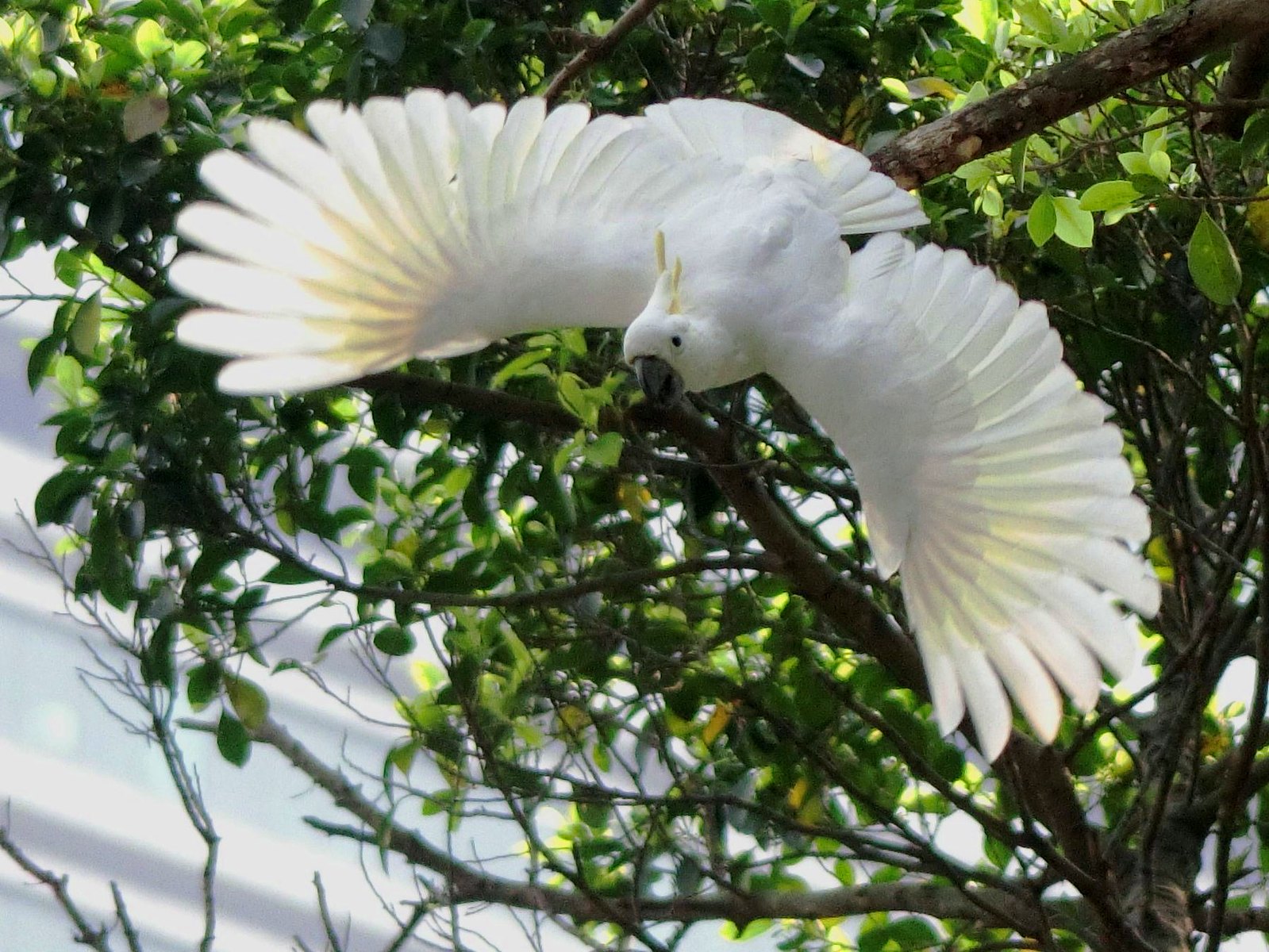



6 comments:
feckin tragic what the human animal is capable of
Fqd up beyond concept. What else can one say, Michael.
Nearly half the bottled birds are now dead, and from what can be seen in the available photos, the others aren't looking too happy.
"The birds, which are native to Indonesia and East Timor and measure up to 35cm, reportedly cost up to £650 on the black market."
and what of the human soul who does not look at these crushed birds and release them immediately, instead of posing for pictures . . .
Our world is too small by half.
I wish the world were as big as it once was--so big that it couldn't be traversed, and remained remote and mysterious and unspoiled.
Alas, it may never be again.
We'll all eventually be rubbing up against each other and fucking each other and infecting each other and moving mountains around.
And killing whatever other animals we find, if not for food, or sport, then simply because we're bored.
Glad I won't live to see it.
Tom, when I was young I remember meeting an old Parsee at one of Lahore's old bookshops and he told me: K, I've given up on human beings and spend all my time with animals.
Reading the news (human traffickers of sex slaves may be targeting Nepal after the quake) and seeing these horrific pictures you have to wonder if he wasn't on to something there.
Khair..hope all else is well.
b.
"and what of the human soul who does not look at these crushed birds and release them immediately, instead of posing for pictures . . ."
Indeed. But as the "arrest" was made for publicity purposes, the photo-op was necessary; and too, when one looks into the conditions of custody for "pet" cockatoos, one finds that for such creatures to be held captive, their talons must be clipped; releasing a broken, suffocated, terrified bird, mired in its own faeces, yet with talons still intact, could represent a dodgy moment for any human soul in the vicinity.
So -- why not just leave them in the bottles, for the photo-shoot?
Not that, in any case, "rescuing" one of these birds would in any meaningful sense be "saving" it -- too late for that now.
But what is the human soul?
I spent several months last winter attempting to understand the American "Transcendentalist" Ralph Waldo Emerson's concept of "the Over-Soul".
What a tremendous waste of time that was.
Evidence suggests that a real animal soul exists, but that this gift has been distributed unequally among animals, the two-footed ones coming up short, and unsuccessfully addressing the deficit with this extraordinary capacity for senseless brutality and cruelty directed at other creatures.
It's a shame but, in the end, that's the way of the human soul. The rest of the world's just going to have to live with, or perhaps die of it, soon enough.
Marianne Moore: The Pangolin
Post a Comment